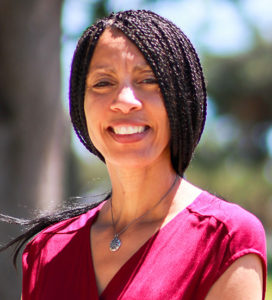Why “Five Fierce Humanists”? A Comment on White Supremacy and the “Movement”

Several months ago, after seeing issue after issue of the Humanist magazine with white folks on the cover, I approached editor Jennifer Bardi with the idea for a feature story on Black women humanists that would be modeled after my 2016 Huffington Post piece, “Ten Fierce Atheists: Unapologetically Black Women Beyond Belief.” The article featured ten Black women activists, writers, and educators who have been pioneering voices in atheist, humanist, and freethought organizing. Leading by example, these women have pushed back against sexist, heteronormative religious dogma and discrimination in communities of color. They have brought a uniquely intersectional, Black feminist vision to humanism while also challenging white supremacy and racist exclusion in historically Eurocentric atheist, humanist, and freethought circles. Although there has long been a robust tradition of Black secular thought, the reductive association of atheism, humanism, and freethought with an agenda based almost exclusively on church-state separation and science has stymied participation by people of color in secular movements. Moreover, white atheist and humanist cosigning of racist perceptions of African Americans and people of color, as well as backlash against social justice organizing, further underscore the racial divide that informs secularism.
The recent flap over white Yale graduate student and secular writer Sarah Braasch exemplifies this divide. In May, Braasch called 911 on a Black female grad student who was sleeping in the common area of their dormitory. Braasch viewed the woman as suspicious because she didn’t know if she was a resident. Although the impetus for the call was deemed to be dubious by law enforcement, Braasch had a history of making racist, Islamophobic claims and endorsing hate speech. Some of these claims were published by and tacitly validated in the Humanist in 2009 and 2010. In the 2010 piece, which argued in favor of the burqa ban that was being debated in France at the time, Braasch made an analogy to American slavery and discussed a middle school assignment she’d been part of, in which students had to debate the pros and cons of slavery. Arguing the pro side, Braasch describes having a “eureka moment” that some Blacks were actually cool with being slaves. “In a democracy, in the land of the free, who are we to tell people that they can’t be slaves, that (they) have to be regarded as fully human?” she asks, then proceeds to compare her plight as a former Jehovah’s Witness to being a slave and argues that societal laws (like one banning Muslim women from wearing face-covering veils) should “make it a little easier to reject slavery.”
The piece (part of a point-counterpoint on the burqa and face veil) was not accompanied by a disclaimer. Trotting out logic and reason as a cover for her racist premise, Braasch’s claim to objectivity was a smokescreen for the same paternalistic “slavery as redemption” theme that informs white supremacist propaganda like D.W. Griffith’s 1915 film Birth of a Nation and the 1946 Disney film Song of the South. In Birth of a Nation, the specter of Black male savagery against white women becomes a clarion call for the Klan to retake the South from marauding Blacks empowered by Reconstruction. Playing Miss Ann, the aggrieved white woman fearful of Black “criminality,” Braasch’s actions at lily-white Yale were yet another example of the systemic racial profiling and harassment African Americans experience in public and private spaces. The national backlash against the incident in the dorm—and to numerous similar cases, such as when a Starbucks manager called the police on two Black men sitting in a Philadelphia store in April—signifies how deep the legacy of slavery is in an era where “being while Black” can still lead to incarceration or death.
Far too often, white nonbelievers have argued that social justice, anti-racism, and intersectional resistance are “incompatible” with a secular agenda. The real evil, they contend, is organized religion and the cultural and political hierarchies it enforces. Logic, reason, and science should be the cornerstones of humanist resistance, the thinking goes. Once oppressive faith-based institutions are toppled and backward religionists start “thinking critically” the revolution (spearheaded by enlightened white secularists) can begin. But Western notions of logic, reason, and scientific inquiry have all historically been defined by whites in the service of validating white bodies and white humanity.
Coming from a position of white privilege and segregation, these legacies continue to inform the leadership of secular organizations like the American Humanist Association, as well as secular publications like the Humanist. Prior to the publication of this piece, the magazine had not featured African-American women or women of color on its covers in decades. Thus, as forerunning Black feminist educator and orator Anna Julia Cooper noted about the question of black self-determination at the intersection of racism and sexism, “Only the Black woman can say when and where I enter.” These words eloquently characterize the frontiers Black women are forging in an increasingly theocratic, new Jim Crow society where to be a fierce Black feminist humanist heathen is a third rail proposition.
